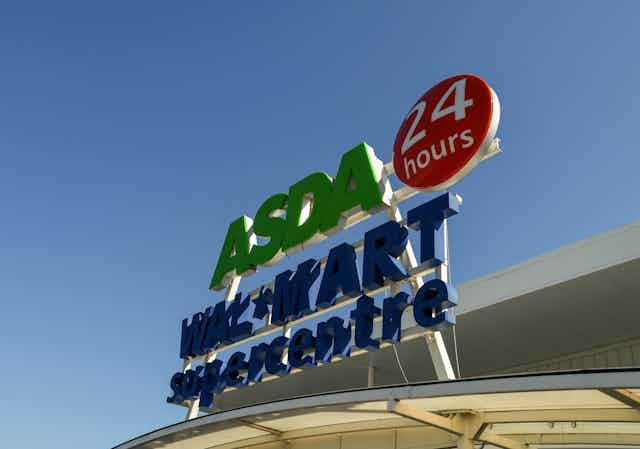British retailers Sainsbury’s and Asda have agreed to a £13 billion merger. They plan to keep their brands separate so retailers may not notice a difference. But, together, the two will be the biggest player in the grocery market and the move would mark a significant shift for the supermarket industry, which faces a number of challenges.
This merger is all about market share. It follows hot on the heels of supermarket giant Tesco’s £4 billion takeover of Booker, the country’s largest wholesaler in March 2018. This created a food and drink powerhouse with a market capitalisation of nearly £20 billion. It put Tesco way ahead of its rivals in terms of revenue and market share and clearly acted as a wake-up call to them. Then there is the growing threat of Amazon, which bought Whole Foods last year and is working with supermarket Morrisons to deliver in parts of the UK.
The market has seen rapid growth and changes over the last decade and organic growth for either Sainsbury’s or Asda would be very difficult. Both businesses suffer from a legacy of large out of town stores, which are less popular with consumers. They both need to up their games to improve their products, online services, and capitalise on how and where people like to shop.
The obvious solution is to grow their customer base and revenues, while cutting their margins, through merging. Together Sainsbury’s and Asda have more than 31.4% of the grocery market, making them the market leaders. Their combined revenues are in the region of £51 billion (based on 2017 figures).
Meanwhile, Walmart, which owns Asda, can let go of its interest in the UK market and focus on its base in the US which is facing various challenges. Walmart will receive nearly £3 billion in cash and 42% of the combined business, in return for selling Asda.
Benefits for all?
Like any merger and acquisition, this will bring strength to the balance sheet through capitalising on the strengths of both businesses. Asda is much more popular in the north of the country, whereas Sainsbury’s is more popular in the south.
Argos, which was bought by Sainsbury’s in 2016, will also benefit. The catalogue retail chain has a strong online offering, which should help Asda in the same way that it has already helped Sainsbury’s. In turn, Asda, which is also big in non-food products, will play host to Argos concessions in its stores.
The merger would give the group more than 2,800 stores. Executives have said that none will be shut as a result of the merger but they are planning to save £500m through “operational efficiencies” and by opening Argos concessions in Asda stores. This means that suppliers are likely to be effected.
Customers, however, are likely to benefit from this and see lower prices, more choice and improvements both in store and online. Sainsbury’s CEO, Mike Coupe, who will lead the combined group, said that prices of common products should drop by around 10%.
By joining forces with Asda, Sainsbury’s will be hoping to compete with the likes of Aldi and Lidl, which have changed the game for supermarkets in recent years. The combined business will be able to up their game on pricing of common products, negotiate for lower pricing with competitive suppliers and improve their online business.
Coupe has vast experience in the industry so is well positioned to lead the new supermarket giant. He has experience at Unilever, Tesco, Iceland and Asda so understands the culture of both firms. And he seems confident of the new giant’s prospects.
But the deal is not yet done. Because of the size of the two supermarkets, the merger requires regulatory approval from the Competition and Markets Authority (CMA). This could be a challenge as both business are closely related which would create a monopoly over the grocery sales. It may well come with demands to close stores. By comparison, the Tesco-Booker deal was approved by the CMA, which pointed out that the two companies did not compete “head-to-head” in most of their activities.
The competition in the retail sector is as fierce as ever. The merger between Sainsbury’s and Asda shows the need to stay competitive – especially following Tesco’s growth and Amazon moving into the industry. To stay afloat, businesses must lower their prices, keep loyalty, improve convenience and innovate to better attract and retain their customers. The latest merger follows industry trends and is a clear indication that other deals are likely as stores seek to keep up with the market.

